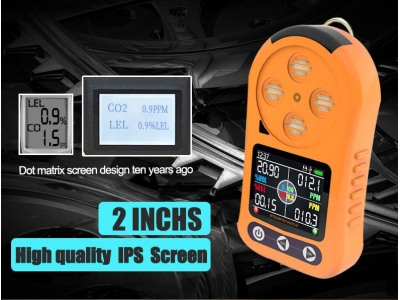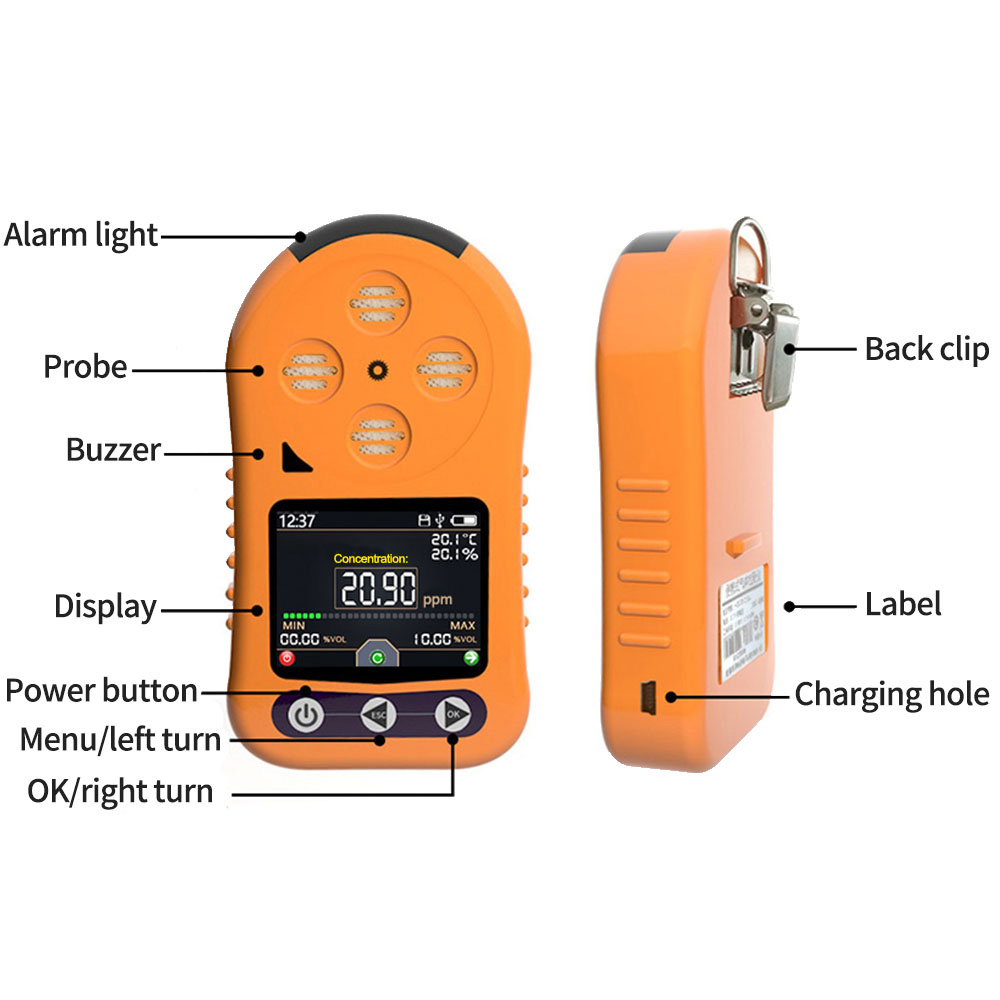
HOW DOES CARBON MONOXIDE DETECTOR WORK?
Carbon monoxide can cause permanent damage or death, even in small doses, so it's important to have a carbon monoxide detector.

Carbon monoxide can cause permanent damage or death, even in small doses, so it's important to have a carbon monoxide detector.
Carbon monoxide is normally a toxic, odorless, colorless gas that is a byproduct of burning carbon-based fuels. Even if you can't see or smell it, you can find its presence in the smoke from stoves, stoves, gas ranges, kerosene heaters, car exhaust, lanterns, and even portable generators. Carbon monoxide can cause permanent damage or death, even in small doses, so it's important to have a carbon monoxide detector.
Carbon monoxide is a “silent killer” because anyone can breathe it in without knowing. Symptoms of CO poisoning include dizziness, nausea, weakness, confusion, and chest pain. Symptoms can take hours to appear, and they may be mild at first but major complications can happen hours after exposure.
A carbon monoxide detector will sound an alarm when CO reaches an unsafe level, giving you the chance to leave the space and get outdoors. The higher the concentration, the faster an alarm will go off.
We measure carbon monoxide in the atmosphere in parts per million (ppm). It can take a standard carbon monoxide detector one hour to alert at concentrations of 70 ppm and below. CO detectors will respond to extremely high concentrations of 400 ppm and above in as little as four minutes.

The levels of carbon monoxide can vary depending on the source and the space. A well-tuned car can produce CO at levels over 80,000 ppm right after you start it before dropping down to about 300 ppm after 15 minutes. Kitchen gas ranges must produce no more than 800 ppm of CO, but they are typically tuned to produce less than 50 ppm.
The National Fire Protection Agency says the average adult can experience symptoms of CO poisoning at just 50 ppm with prolonged exposure. At 400 ppm, headaches and nausea can set in with just one hour of exposure. At 6,400 ppm, there is a serious risk of death after just 15 or 20 minutes of exposure.
Buto amount of carbon monoxide is ideal. Low concentrations can become dangerous concentrations. Even if your stove produces less than 50 ppm of CO, if you leave it on CO can build and concentrate in your kitchen at dangerous levels. The higher the concentration of CO, the more likely it is to cause illness, injury, or even death.

A carbon monoxide detector is a simple device with a few key components. A silicon microchip, housed in a plastic shell, sends an electrical charge to a small detection chamber that contains a CO sensor. This sensor can detect and measure CO concentration in the atmosphere. If the sensor detects high levels of CO, the microchip will trigger an alarm. The CO alarm is powered by a home’s or business’s electrical system or a battery.
CO detectors may also include a power indicator light, test button, and LCD screen. Models with an LCD screen may display system status and CO level during an alarm. The power indicator light will let you know if the unit works or if the battery requires replacement.
Some models might also make a chirping noise to indicate a low battery level. The test button allows you to test functionality. Make sure you are testing your CO detectors at least once per month and changing the batteries, or replacing the unit entirely, when needed.

Carbon monoxide is slightly lighter than air, meaning it will rise above the floor. Because of this, you should place detectors on a wall about five feet above the floor or on the ceiling. Do not install the detector near a fireplace or any flame-producing appliance or you’ll end up with false readings. Keep the detector out of the way of foot traffic, especially of pets and children.
To make sure your and your family are safe, get your CO detectors inspected regularly. Follow the instructions included with the detector. Be sure to replace the battery when needed. Most carbon monoxide detectors will last 5 to 7 years before replacement.